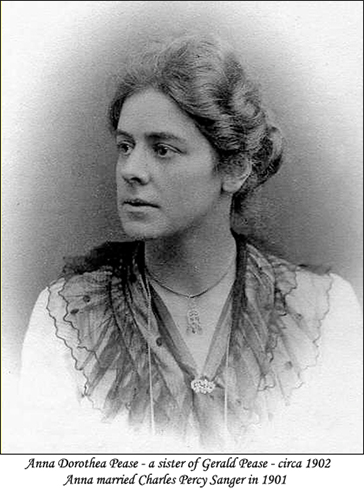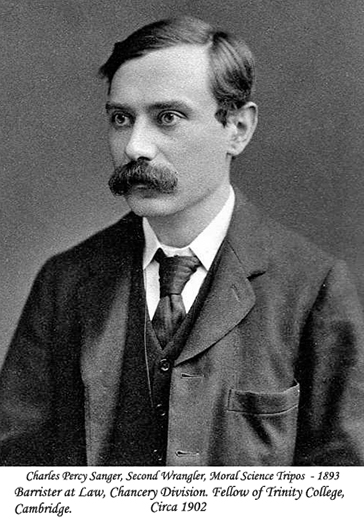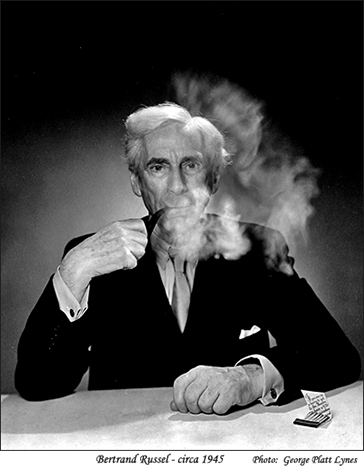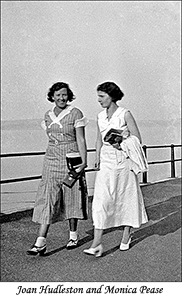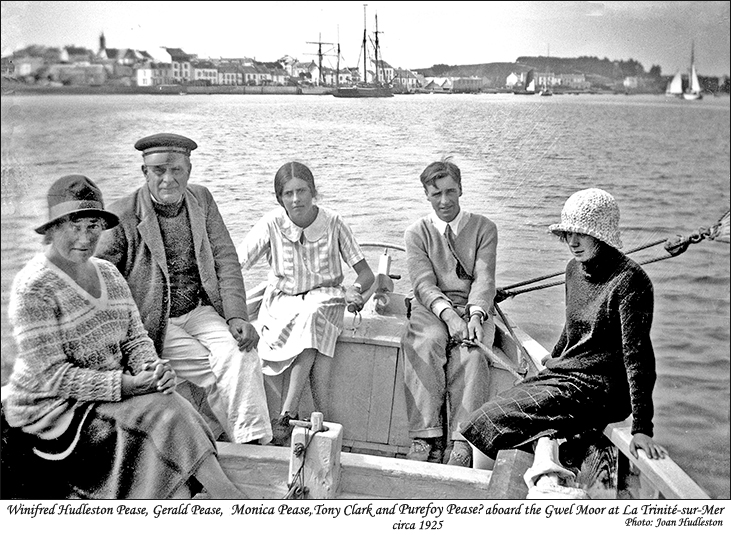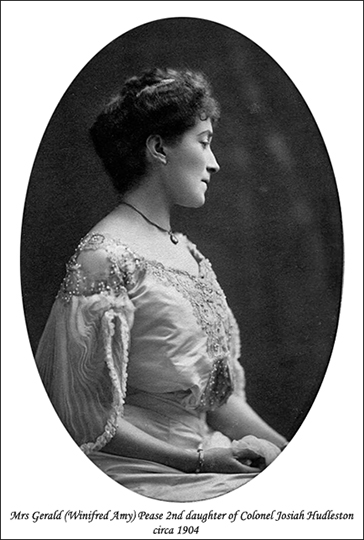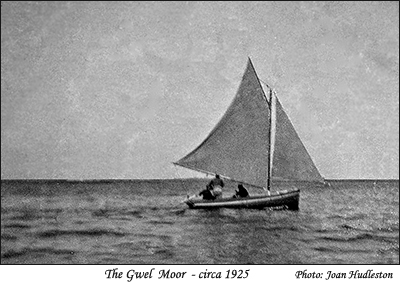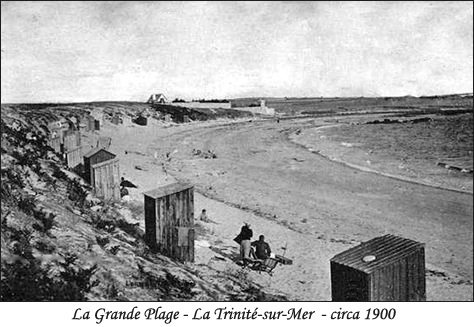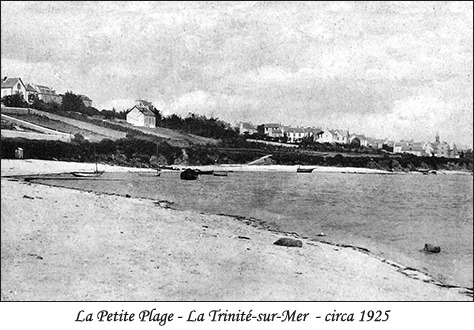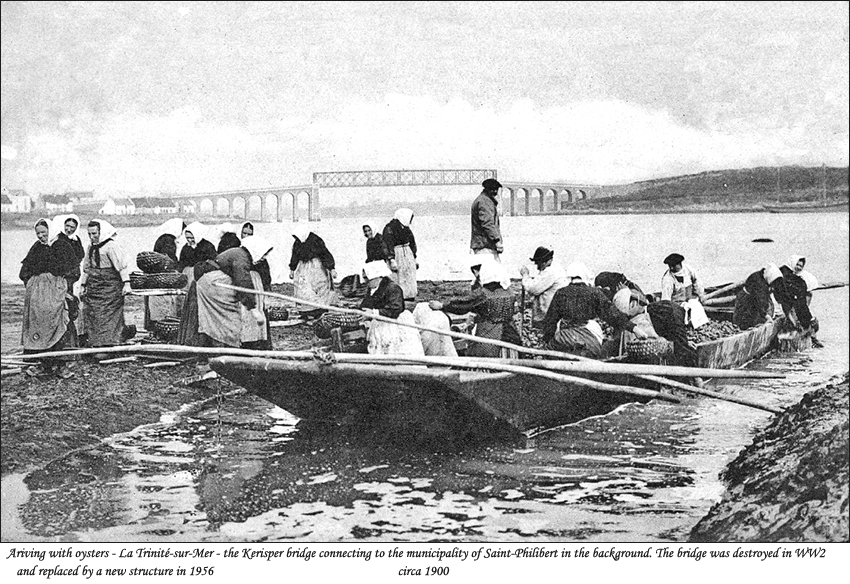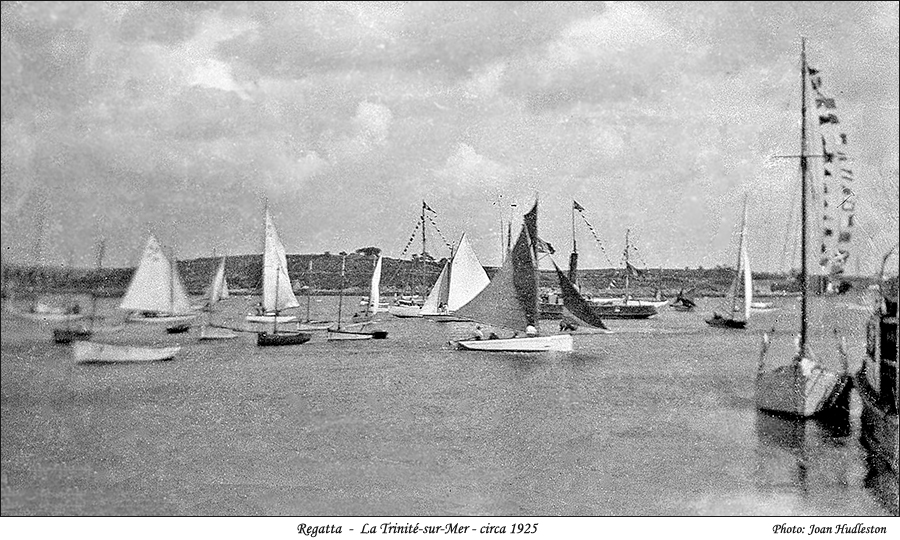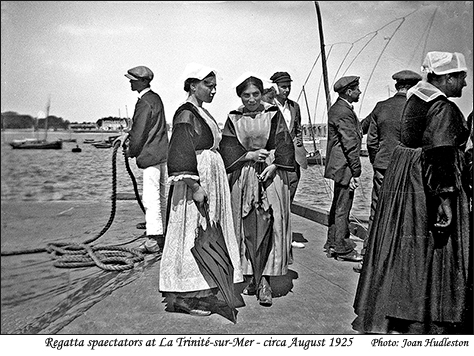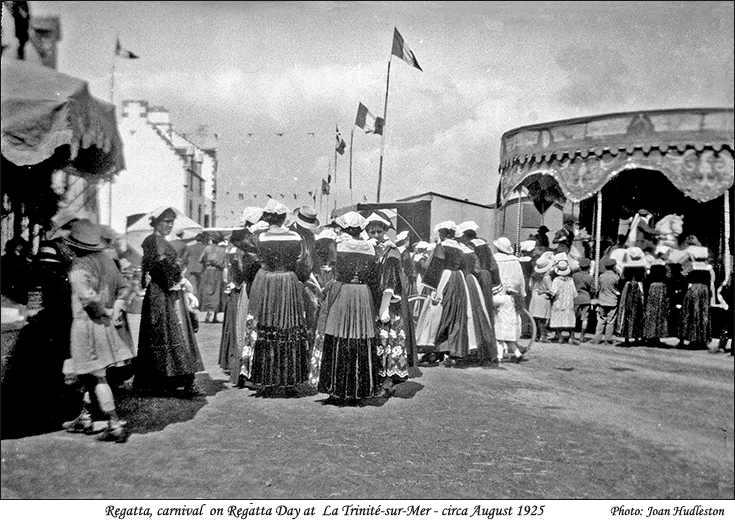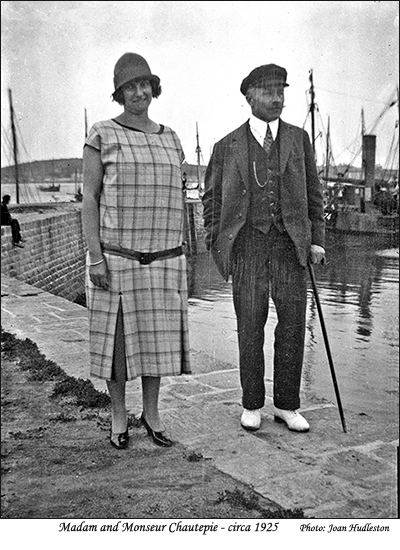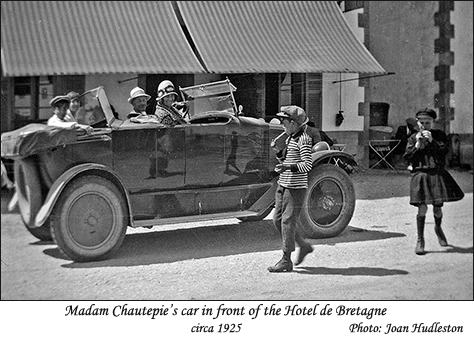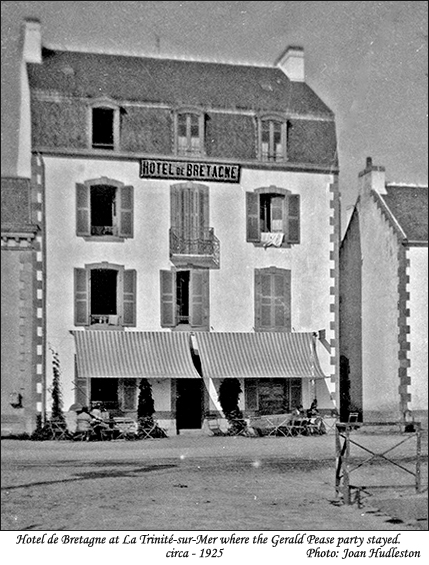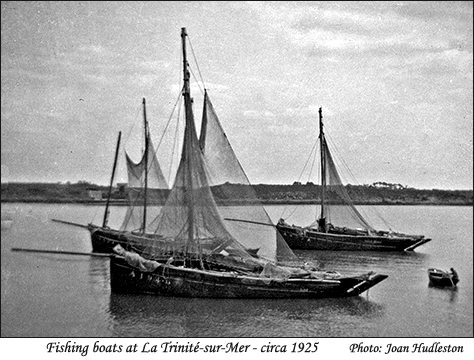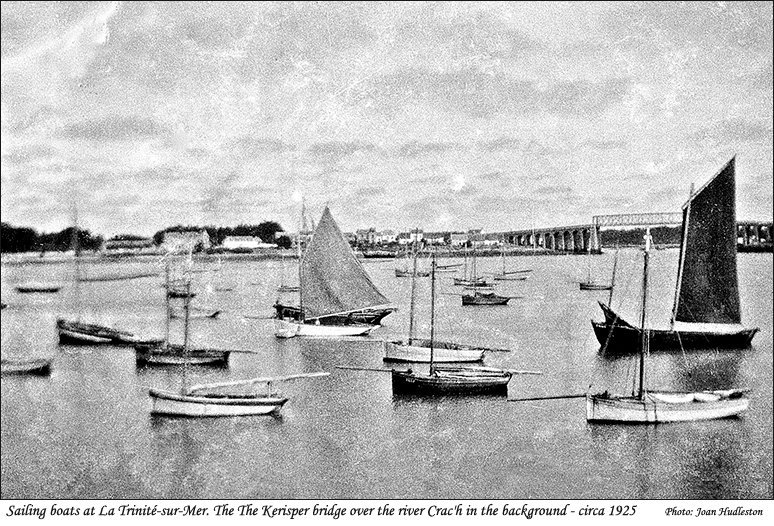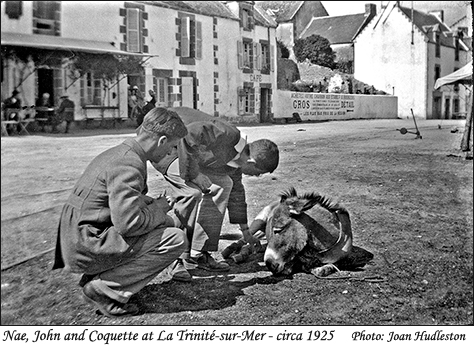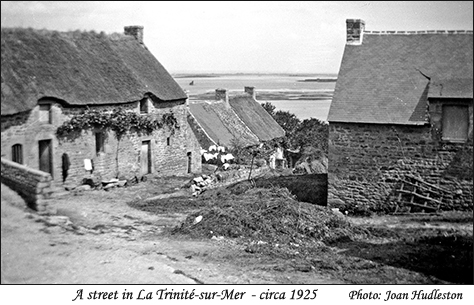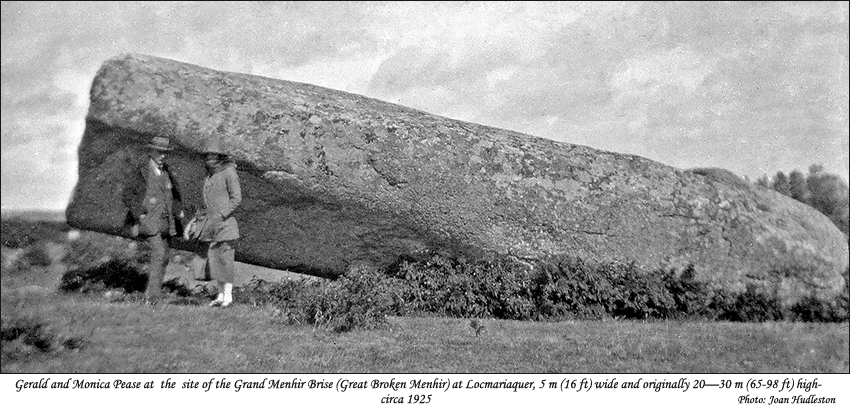Holidays in La TrinitÉ-sur-Mer & Carnac
Text: Monica Vincent née Pease.(1909-1987)
Photos: Joan Hyde née Hudleston. (1907-1992)
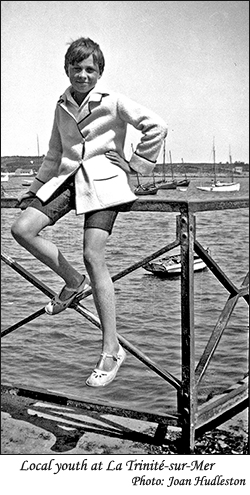
Monica Vincent (née Pease) wrote:
In the year 1924, my parents (Gerald and Winifred (Hudleston) Pease) decided that we ought to have a change from Penally, as I have said. They said that we girls (Purefoy Pease, Monica Pease and Joan Hudleston) were getting "insular", which no doubt was true.
So they took us abroad to a little fishing village (as it was then) called La Trinite, on the south coast of Brittany not far from Quiberon, and east of Carnac. We went there for four consecutive years, from 1924 to 1927, and we kept a boat there, in which we sailed every day.
I've heard that La Trinité-sur-Mer is now (1979) a fashionable yachting centre, but in the 1920's it was largely unknown to English people and to yachtsmen. The Gwel Moor was a small open boat with blue sails. She measured about 23 feet from bow to stern, was broad in the beam and weighed about two tons.
We had bought her from Hugh Webster's parents when they had to give up sailing for health reasons. We adored that boat. The name means "Queen of the Sea", which she was far from being, but she was sturdy and reliable, and virtually unsinkable.
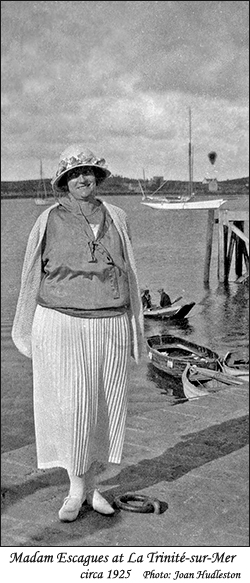
Joan (Hudleston) loved all things French and could speak the language quite well, so she was very happy at La Trinite. Purefoy, for some reason, spoke it very little, and I spoke it very little because I was shy even about speaking English, and how much worse was a foreign language!
However, as I have said, we made friends with some of the French holiday people, who spoke English more or less well. More than the language, I enjoyed the un-English countryside with its aromatic scents, the look of the little white houses with their shutters and black corner-stones, and, of course, the sea and the river.
La Trinité-sur-Mer was on the estuary on the river Crac'h. If the tide was right you could sail up the river quite a long way, and have a picnic on the bank near the top of the navigable part, but more usually we sailed down the estuary and out to sea.
Round the corner on your right was a good bathing beach called La Grande Plage, unfrequented of course; nearer the village, on the estuary, was La Petite Plage, which we rather despised because French families with small children used to go there, and the water wasn't real sea, and nobody swam - only paddled.
